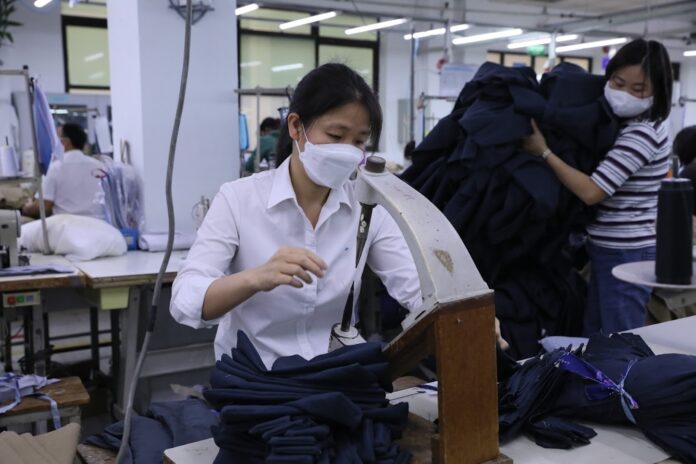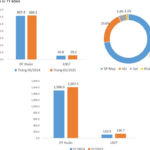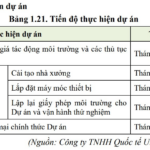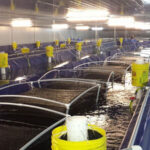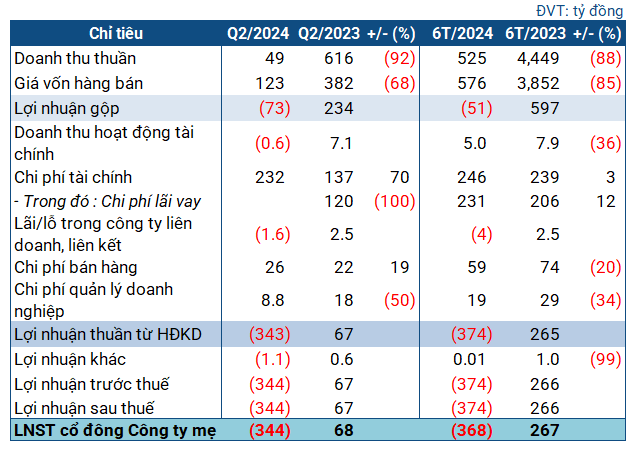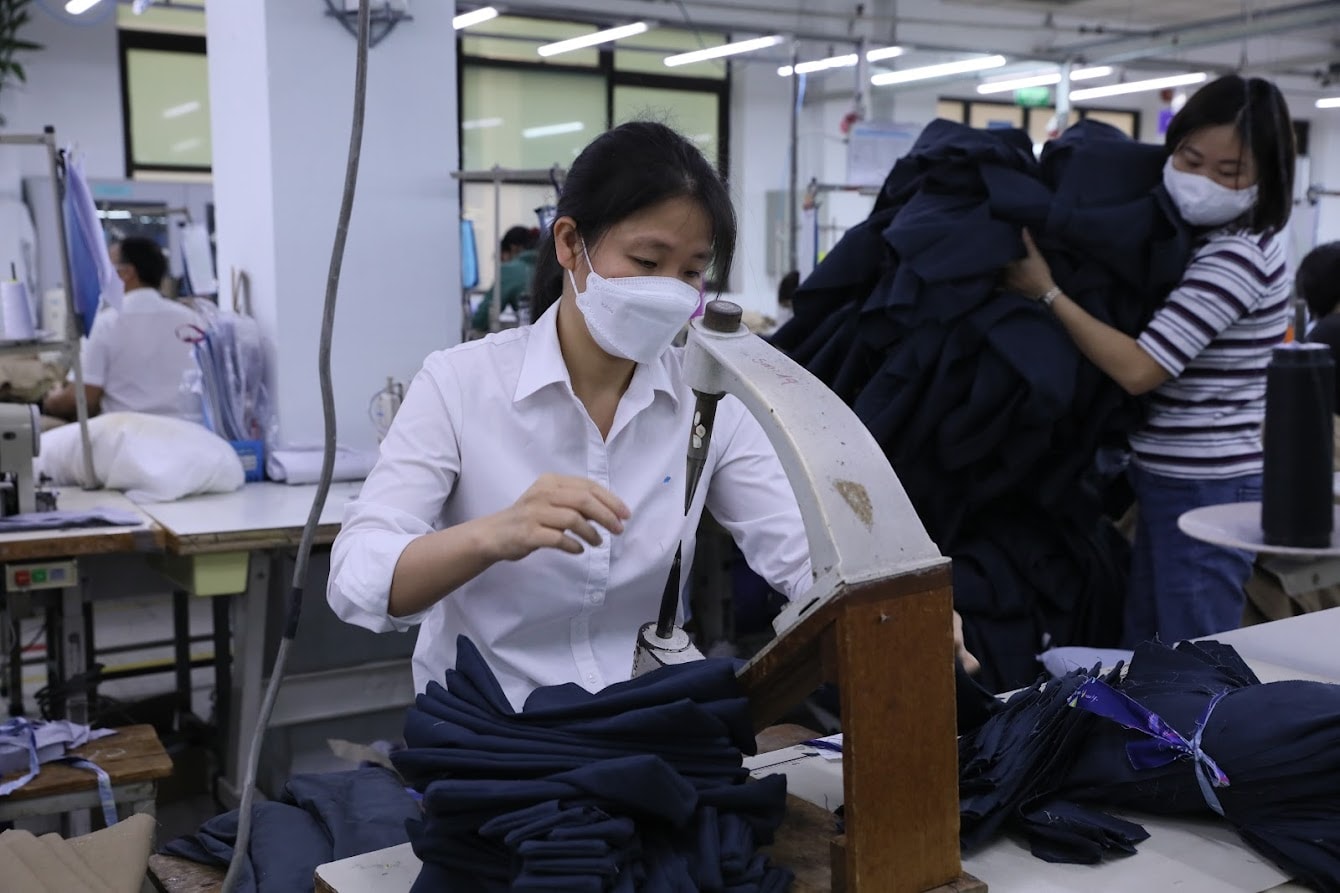
Vietnamese textile and garment enterprises have had orders until the end of the third quarter of 2025. Photo: Quang Vinh.
Nearly $7 billion trade surplus
The $17.58 billion turnover in the first five months of the year not only reflects the strong recovery of textile and garment exports, but also the import turnover of raw materials and accessories reaching $10.63 billion, resulting in a trade surplus of $6.95 billion.
This achievement has made a significant contribution to the economy in the first five months. Regarding this result, Mr. Truong Van Cam, Vice Chairman and General Secretary of VITAS, said that many enterprises in the industry have shown initiative and flexibility in production by improving processes, moving towards sustainable production, and expanding niche markets to seek growth opportunities.
Information from Vinatex also shows that, at this time, most enterprises under the corporation have received enough orders until the end of the second quarter of 2025 and are negotiating for the third quarter of 2025.
This positive development is also evident at Song Hong Garment Company, one of the units with the highest export turnover to the US in the industry, up to 80%. The company’s revenue in the first quarter reached more than VND 1,017 billion, up nearly 34.4% over the same period, with after-tax profit reaching nearly VND 86.3 billion, up nearly 51.4% over the same period in 2024. Another bright spot in the industry is Thanh Cong Textile and Garment Investment and Trading Joint Stock Company. In the first quarter, the company recorded an 8% increase in revenue over the same period, reaching nearly VND 1,011 billion. After-tax profit reached VND 78.5 billion, up 26% over the same period in 2024.
Regarding the competitiveness of Vietnam’s textile and garment industry in the international market, Mr. Truong Van Cam, Vice Chairman and General Secretary of VITAS, said that based on a survey in six major countries in the region (Bangladesh, Cambodia, Laos, Nepal, China, and Vietnam), Vietnam has a significant advantage over most countries, only lower than China in a few indicators. This affirms that the quality and price of Vietnam’s textile and garment products are in the middle range or higher.
Efforts to diversify markets
In reality, the textile and garment industry of Vietnam has shown many bright spots in the first quarter. However, according to Mr. Cam, the Vietnamese textile and garment industry is still facing many challenges due to weak global demand and geopolitical tensions in some regions.
Therefore, in the context of some traditional markets possibly making policy adjustments (such as the US applying import tax policies to many countries, including Vietnam), it is crucial to seek and exploit new potential markets. Among them, the Russian Federation is considered a promising market by experts.
According to the Vietnamese Ambassador to the Russian Federation, this is a large market with a GDP in terms of purchasing power parity ranking fourth in the world, and there is a demand to promote cooperation with Vietnam. Vietnam’s garment products are considered high-quality and suitable to the tastes and fashion trends of Russian consumers. In fact, the export turnover of Vietnam’s textile and garment products to Russia has increased rapidly, and although the proportion is still modest, cooperation with Russia holds great potential.
Meanwhile, the leader of Thanh Cong Textile and Garment Investment and Trading Joint Stock Company said that, in the context of unpredictable fluctuations in the US tariff policy, Thanh Cong has proactively sought and expanded its market. This includes promoting the search for and expansion into the EU markets, the CPTPP market, the Middle East, South America, and so on, to make up for the shortage of orders due to the imposition of tariffs from the US.
Industry experts believe that the first five months of 2025 mark a positive start for Vietnam’s textile and garment industry, with promising export growth. However, to maintain sustainable development and enhance its position, thoroughly solving the problem of raw materials and actively exploiting new potential markets will be the key, requiring effective coordination between the business community and state management agencies.
According to VITAS, to overcome the current weaknesses of the industry, especially the problem of raw material supply, large-scale textile and garment industrial parks should be developed soon to attract investment in fabric and raw material production, thereby improving the localization rate in the supply chain. In addition, enterprises in the industry need to diversify their products, especially segments with high added value, continue to improve productivity, optimize costs, and develop the domestic market…
The Vietnam Textile and Apparel Association (VITAS) said that it has proposed to the Ministry of Industry and Trade to promote the negotiation process of free trade agreements such as the ASEAN-Canada FTA to reduce barriers in rules of origin and suggested negotiating with the Eurasian Economic Union (EAEU) to loosen technical thresholds…
Unilever Vietnam Steps Up Its Game: Plans to Ramp Up Cu Chi Factory Investment to Nearly VND 3,000 Billion, Aiming for In-House Sorbitol Production
Unilever International Vietnam Ltd. is seeking to boost its investment to 2,725 billion VND to produce liquid sorbitol with an annual capacity of 14,000 tons.
A Silver Lining in the Economic Cloud: The First Half Review
The Vietnamese economy witnessed numerous positive signals in the first half of 2025, indicating robust growth across various sectors. The country’s GDP experienced a significant surge, accompanied by thriving manufacturing, bustling import-export activities, robust public investment, and vibrant FDI inflows. These multifaceted indicators paint a promising picture of Vietnam’s economic landscape, setting the stage for further prosperity in the latter half of the year and beyond.
“Surplus Trade Surges in Dong Nai: Over $3.2 Billion in the First Five Months of 2025”
“In the first five months of 2025, Dong Nai’s economy continued its positive growth trajectory with several notable highlights. The province’s trade impresses with an estimated turnover of 18.39 billion USD, boasting a trade surplus of 3.23 billion USD. Dong Nai maintains its position as a leading locality in terms of trade surplus, showcasing its robust economic performance and potential.”

